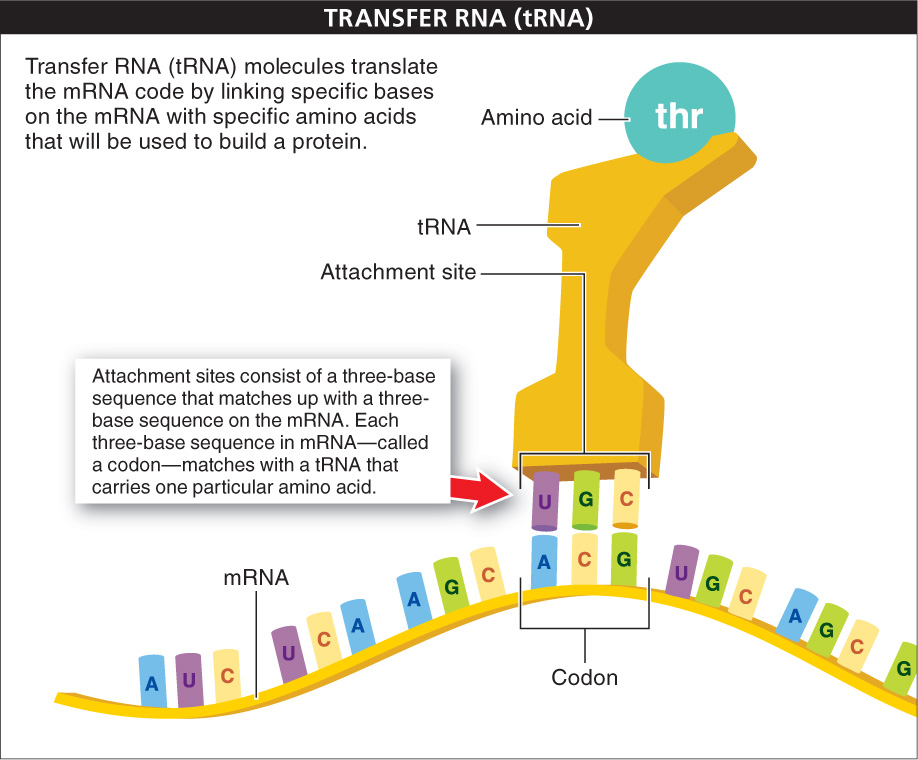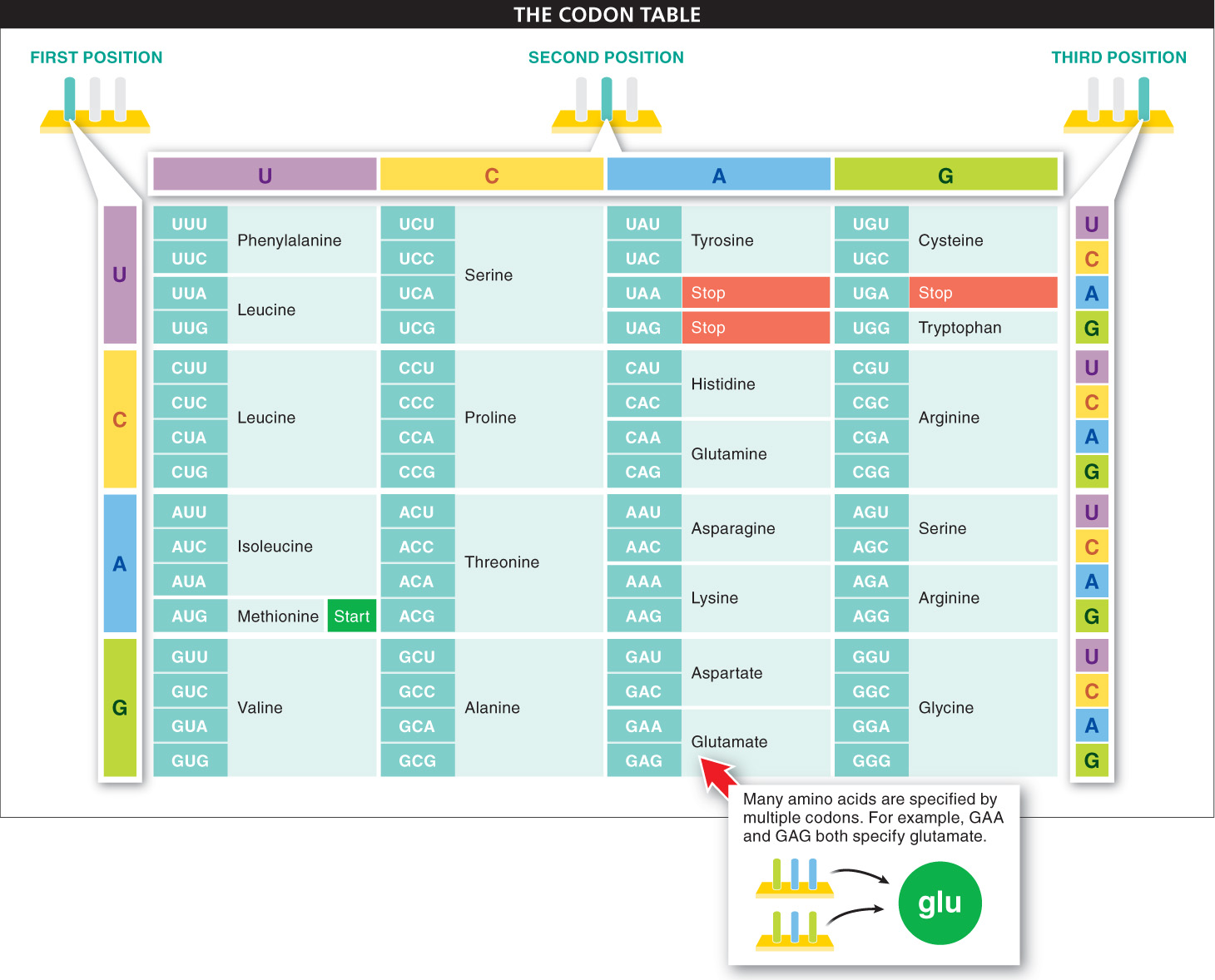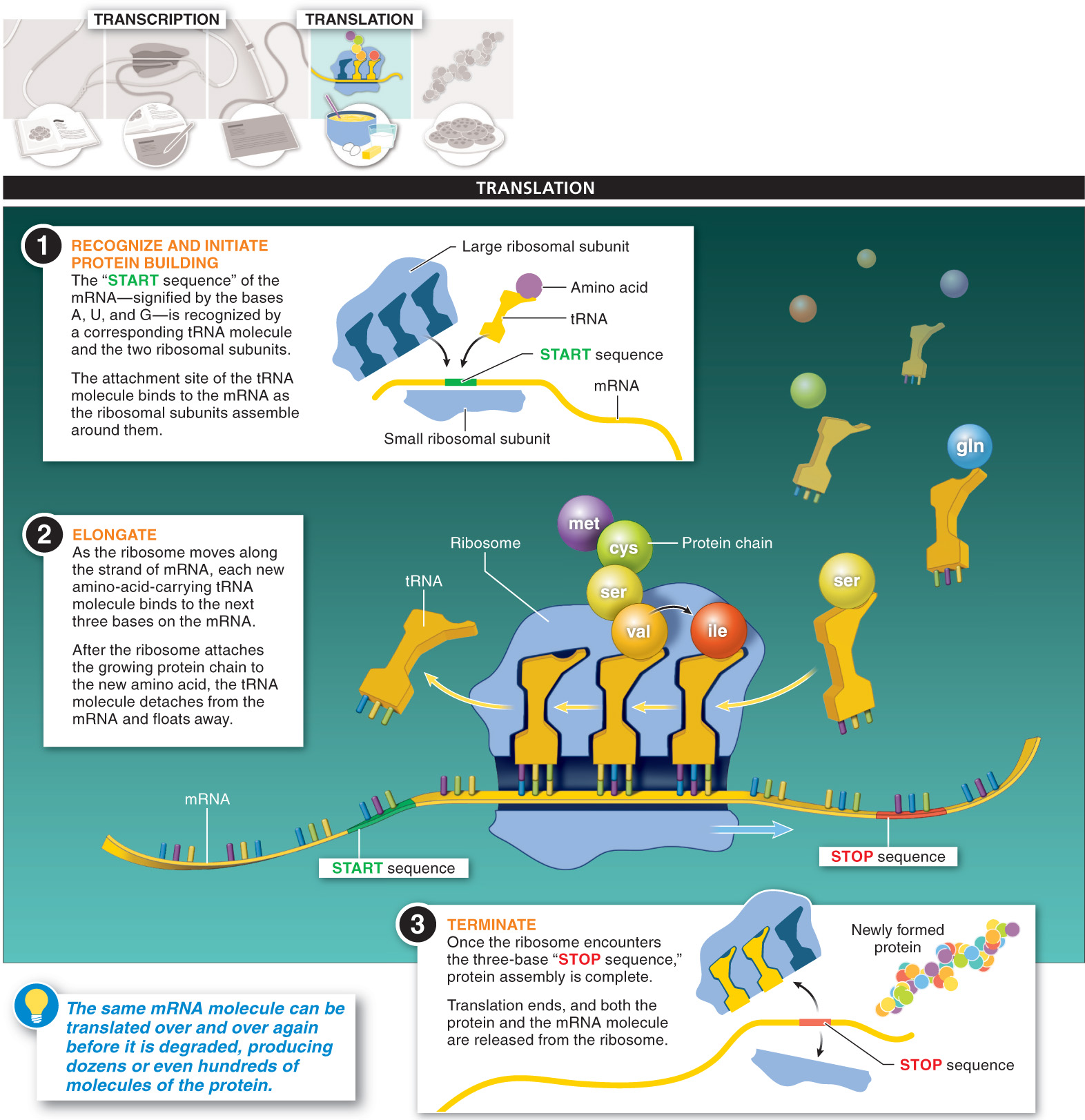Once the mRNA molecule has moved out of the cell’s nucleus and into the cytoplasm, the translation process begins. In translation, the information carried by the mRNA is read, and ingredients present in the cytoplasm are used to produce a protein (see Figure 5-
Several ingredients must be present in the cytoplasm for translation to occur. First, there must be large numbers of free amino acids floating around. Recall from Chapter 2 that amino acids are the raw materials for building proteins and an essential component of our diet. Second, there must be ribosomal subunits, which are components of ribosomes, the protein-
To read an encrypted message, you need to know the secret code by which to translate each of the encrypted characters into a readable character in the message. Similarly, to understand which sequence of amino acids in a polypeptide is specified by a sequence of nucleotides in a DNA molecule—
191
A special type of RNA molecules holds the secret code. These molecules, called transfer RNA (tRNA), interpret the mRNA code, translating the language of DNA—
Picture a molecule with two distinct ends (FIGURE 5-13). On one end of the tRNA molecule is an attachment site consisting of a three-

The codon table (FIGURE 5-14), also called the “genetic code,” describes which tRNA, and therefore which amino acid, is specified by each codon. With four possible bases in each of the three positions of a codon, 64 different codons are possible. Sixty-

192
193
The translation of an mRNA molecule into a sequence of amino acids (that will then fold into the complex three-

Step 1. Recognize and initiate protein building. Translation begins in the cell’s cytoplasm when the subunits of a ribosome, essentially a two-
Step 2. Elongate. After the mRNA start sequence (AUG), the next three bases on the mRNA specify which amino acid–
As this process continues, the amino acid chain grows. The next three bases on the mRNA specify the next amino acid to be added to the first two. And the three bases after that specify the fourth amino acid, and so on. This process of progressively linking together the amino acids specified by an mRNA strand is called protein synthesis, because all proteins are chains of amino acids, like beads on a string. Precision in this process is essential. If the tRNAs were to misread or skip or double-
Step 3. Terminate. Eventually, the ribosome arrives at the codon on the mRNA that signals the end of translation. Once the ribosome encounters this stop sequence, the assembly of the amino acid chain is complete. Translation ends, and the amino acid chain and mRNA molecule are released from the ribosome. As it is being produced, the amino acid chain folds and bends, based on the chemical features in the amino acid side chains (as we saw in Chapter 2). Through the folding and bending, the protein acquires its three-
Following the completion of translation, the mRNA strand may remain in the cytoplasm to serve as the template for producing another molecule of the same protein. In bacteria, an mRNA strand may last from a few seconds to more than an hour; in mammals, an mRNA may last several days. Depending on how long it lasts, the same mRNA strand may be translated hundreds of times. Eventually, it is broken down by enzymes in the cytoplasm.
TAKE-HOME MESSAGE 5.7
Translation is the second step in the two-
Name and briefly describe the three steps involved in translating an mRNA molecule into a sequence of amino acids.
The first step is to recognize and initiate protein building. This involves the subunits of a ribosome recognizing and assembling around a codon on the mRNA transcript called the start sequence (the AUG codon). The second step, elongation, involves an amino acid-carrying tRNA recognizing the next three-base sequence on the mRNA, attaching to the mRNA at that point, and the ribosome facilitating the connection of this amino acid to the previous one. Once attached, the tRNA detaches, floats away, and a new amino-acid carrying tRNA moves in. This process (called protein synthesis) continues, elongating the amino acid chain. The third step, termination, occurs when the ribosome arrives at a codon on the mRNA that signals the end of translation. At this stop sequence, the amino acid chain and the mRNA molecule are released from the ribosome.